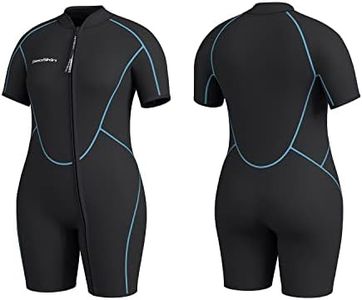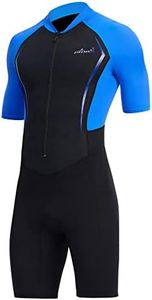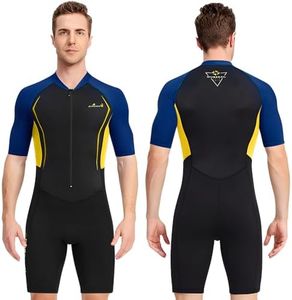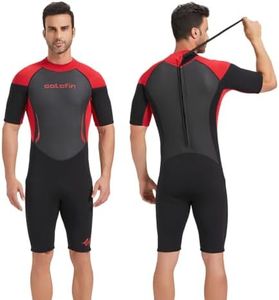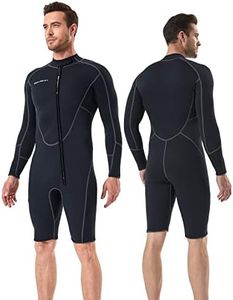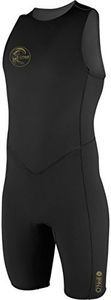We Use CookiesWe use cookies to enhance the security, performance,
functionality and for analytical and promotional activities. By continuing to browse this site you
are agreeing to our privacy policy
10 Best Mens Shorty Wetsuits
From leading brands and best sellers available on the web.Buying Guide for the Best Mens Shorty Wetsuits
Choosing the right men's shorty wetsuit can greatly improve your comfort and performance during water activities such as surfing, snorkeling, paddling, or swimming in cooler water. A shorty wetsuit covers your torso, upper arms, and thighs, and is commonly used in warm to mild water temperatures. Understanding the key specifications will help you select a wetsuit that fits well and performs as needed.ThicknessThickness refers to how thick the neoprene material is, typically measured in millimeters, like 2mm or 3/2mm (where the first number is torso thickness and the second is limb thickness). Thickness affects warmth and flexibility—thicker suits keep you warmer but are less flexible, while thinner suits offer more movement but less insulation. Usually, 2mm to 3mm is considered ideal for shorty wetsuits used in water temperatures ranging from around 68°F to 77°F (20°C to 25°C). Consider when and where you'll use the suit—if you feel cold easily or expect to be in the water longer, go for more thickness; for maximum movement and warmer conditions, a thinner suit works well.
Fit and SizingFit and sizing determine how well the wetsuit contours to your body. A good fit prevents flushing (cold water entering the suit), while a loose wetsuit won’t insulate well. Fit is often categorized by height and weight ranges, and some suits offer more tailored or stretchy panels for a better fit. To find your perfect fit, try on different sizes or check the manufacturer's size chart. The suit should feel snug but not restrictive, with no loose gaps at the neck, wrists, or thighs. Picking the right fit is vital for both warmth and comfort—think about your body type and how tight or relaxed you prefer your gear.
Neoprene TypeNeoprene is the foam material used in wetsuits, and its quality affects warmth, comfort, and flexibility. Higher quality neoprene, like super-stretch or limestone-based neoprene, is softer and more flexible, making it easier to move in, while standard neoprene is more affordable and durable. Lightweight, stretchy neoprene is great for active sports and comfort, while thicker, basic neoprene may suit less frequent users or rougher environments. If you prioritize flexibility, look for suits with high-stretch neoprene panels.
Seam ConstructionSeam construction describes how the pieces of neoprene are joined together. Flatlock stitching is common in shorties and is best for warm water, allowing some water in but feeling more comfortable and flexible. Glued and blind stitched seams are more watertight and warmer, but usually found in thicker, full wetsuits. If you'll be in moderate temperatures and want extra warmth, look for glued or taped seams, but for general comfort and mild water, flatlock is usually sufficient. Picking based on seam type helps balance comfort, warmth, and durability for your activity.
Zipper PlacementZipper placement affects how easy the suit is to put on and how comfortable it feels. Back zippers are the most common and are easy to get into, but can let in a bit more water and sometimes restrict flexibility in the back. Chest zippers offer a better seal to keep water out and allow more flexibility, but can be harder to get into. Some wetsuits even use zip-free designs for maximum flexibility, at the cost of being trickier to put on. Consider your flexibility and ease-of-use preference when evaluating this feature.
Arm and Leg LengthShorty wetsuits come with varying arm and leg lengths. Some have short sleeves and legs, while others may feature longer or shorter cuts. Short sleeves and legs maximize flexibility and are ideal for very warm waters, while slightly longer cuts provide a bit more coverage and warmth. Choose the sleeve and leg length that matches your intended use—more movement and warmth needs mean longer cuts, while high mobility and hotter climates fit shorter cuts.



